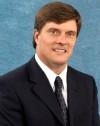by John Behnke, VP of worldwide sales and marketing, Intermolecular Inc.
 May 17, 2011 – The first day of the SEMI/IEEE Advanced Semiconductor Manufacturing Conference (May 16-18) offered productive and informative sessions on keeping chipmaking profitable in coming generations. Even the weather was pro-business; drenching rainstorms ensured that no one was tempted to wander out into the beautiful Saratoga Springs, NY, countryside.
May 17, 2011 – The first day of the SEMI/IEEE Advanced Semiconductor Manufacturing Conference (May 16-18) offered productive and informative sessions on keeping chipmaking profitable in coming generations. Even the weather was pro-business; drenching rainstorms ensured that no one was tempted to wander out into the beautiful Saratoga Springs, NY, countryside.
Keynote speaker Norm Armour, VP and GM of GlobalFoundries’ Fab 8 in New York State, was well-received as "the most popular person within 1000 miles" — not just because he’s one of the industry’s truly nice guys, but because so many conference attendees were eager for jobs or a part of Fab 8’s $7.2 billion purchasing budget. Armour noted that his first fab project in Austin had a budget of about $100 million, which I thought was interesting as that is what a single EUV tool will cost.
Those levels of expenditures for Fab 8, said Armour, explain why new collaboration models are needed to address broad challenges in areas like EUV, 3D packaging, automated process control, and R&D in general. Likewise, the development of 450mm wafers, which he predicted would be the state-of the art technology platform for chipmakers by 2017, with fabs running in the $10 billion range.
Armour indicated that Fab 8 expects to receive its first EUV litho tool in the second half of next year, and to begin using EUV at the 14nm node. Asked whether EUV would be ready, he replied, in essence, that the alternatives (double, triple or even quadruple patterning) are so unappealing that it must be ready.
| ASMC 2011 |
| Day 1: Rain doesn’t damper the spirit |
| Day 2: Approaching device scaling, manufacturing challenges with partnerships |
| Day 3: EUV, image sensors, and a capital perspective |
Other noteworthy talks to open this year’s ASMC:
— Heiko Fröhlich of Infineon discussed a very impressive fully automated on-the-fly edge inspection initiative at a 200mm fab. By inspecting every wafer’s edge for cracks, residue, incomplete copper edge bead removal, and litho wafer-edge exclusion (WEE), the program has been able to identify 5-10 problem wafers each month. The use of analytics to assign a value to WEE was very innovative; the achievement is especially noteworthy because of the fab’s wide range of products, and the fact that it runs geometries from 250nm down to 90nm.
— David Stark, manufacturing capabilities project manager at the International Semiconductor Manufacturing Initiative (ISMI), spoke on equipment health monitoring. The concept is an evolution of data mining, creating a metric of the "health" of process tools, and even particular chambers. In trials with Lam etchers, the system has been able to predict chuck life to within ~100 hours. More broadly, Stark posited that it could be advantageous for a fab management system to route particular wafers to a healthier tool rather than the first-available, as is typically done now.
— A very good overview of through-silicon vias (TSVs) from Klaus Hummler of SEMATECH, whose 3D Interconnect Program (with a long list of blue-chip members) seems to really be stepping up to the task of developing some standardization in the still-fragmented TSV space. This is a perfect example of the type of collaboration that Armour was calling for in his keynote, and it’s good to see it being put into practice.
An added bonus to a very interesting and productive first day of the conference: the night before the hotel bar and grill stayed open late enough for us to catch the San Jose Sharks playoff hockey game. (Unfortunately, they lost!)

